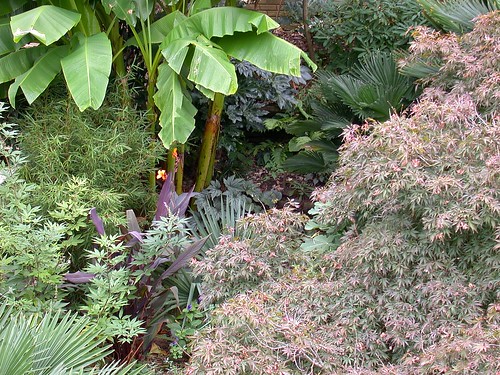
I've always believed that starting small and allowing plants to establish themselves was more important than the instant results I could have gotten by planting larger specimens. This was the case when I began planting hardy palms in my garden in 2002; most were planted as small seedlings (several of which I started from seed myself). I want to find out how hardy these "hardy palms" really are so except for my dwarf windmill palms or "waggies" (Trachycarpus wagnerianus) when they were just starting out, none of my palms has been protected except for mulching. Some of my hardy palms saw temperatures in the single digits in their early years, with the coldest being 6 degrees in February 2004, but winters since then have been warmer and it has been over 5 years since I've measured anything below 10 degrees in my yard.*
In the last 4 years, my palms have really taken off. The last 3 winters have been especially warm, with winter lows in the mid to high teens and it's amazing what a difference a series of mild winters makes. This was my garden in June 2009; pay particular attention to that scraggly little windmill palm (Trachycarpus fortunei) in the lower left, which had already been in the ground for 2 or 3 years at this point:
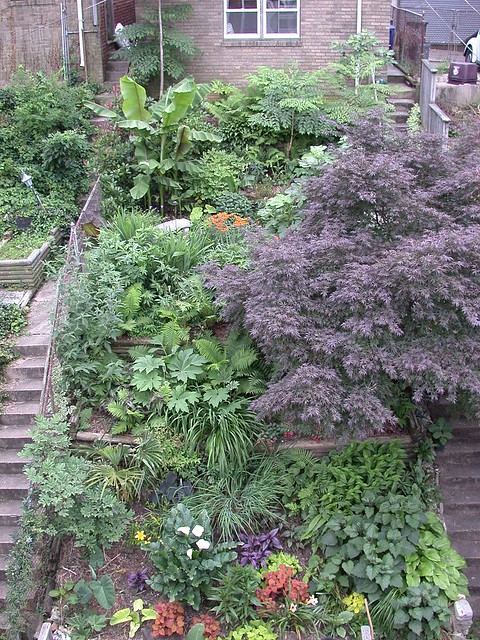
Here's the same scene just 2 months later; the hardy banana (Musa basjoo) and ricepaper plant (Tetrapanax papyrifer) have exploded with growth. (I am always amazed at how fast bananas grow.) But note that the little windmill palm has put a few new fronds as well.
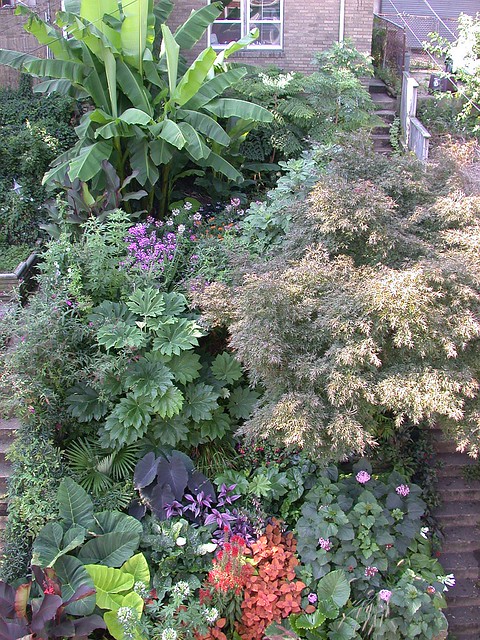
By August 2011, the palm had put out quite a bit of new growth (although for some reason the banana didn't grow as big that year):
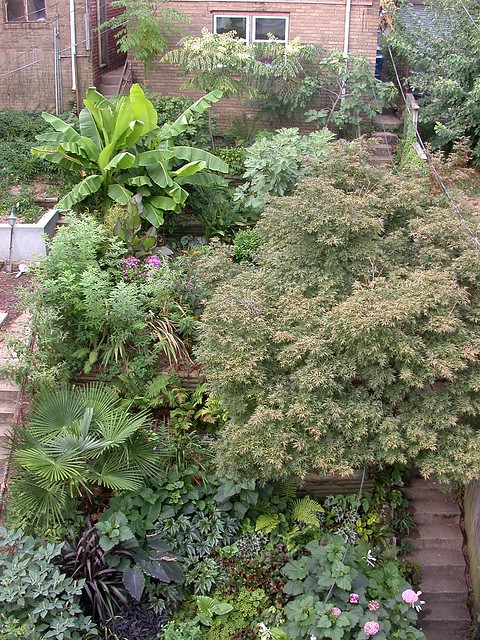
And finally, July 2013; the windmill palm is finally trunking, and in fact bloomed for the first time this spring (note also that you can see the palms in the upper garden starting to peek out from behind the japanese maple):
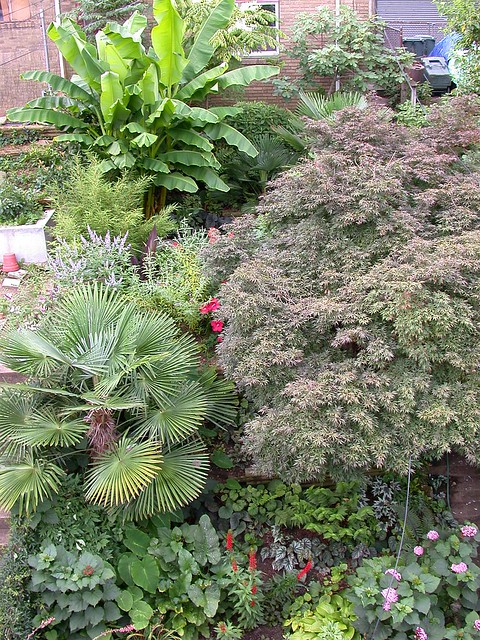
Too bad most palm flowers aren't much to look at! Here's a closeup of one of the inflorescences of the windmill palm as it was beginning to bloom; windmill palms have separate sexes and this one turned out to be a female, meaning it produces only pistillate flowers (and will only produce seeds if there is a male plant nearby to pollinate it).

* It's easy for an inexperienced gardener who has only been gardening for a few years to be lulled into a false sense of what is "normal", but my more experienced gardening friends in the mid-Atlantic region have confirmed my observation that our recent winters have been warmer than average. This graph produced by blogger Ian Sean Livingston demonstrates how high our recent winter lows have been, with winter lows above average since the mid-1990's (and note it doesn't even include our most recent 3 winters, which were ridiculously warm):

Source: High and low temperature by year at Washington, D.C.

No comments :
New comments are not allowed.